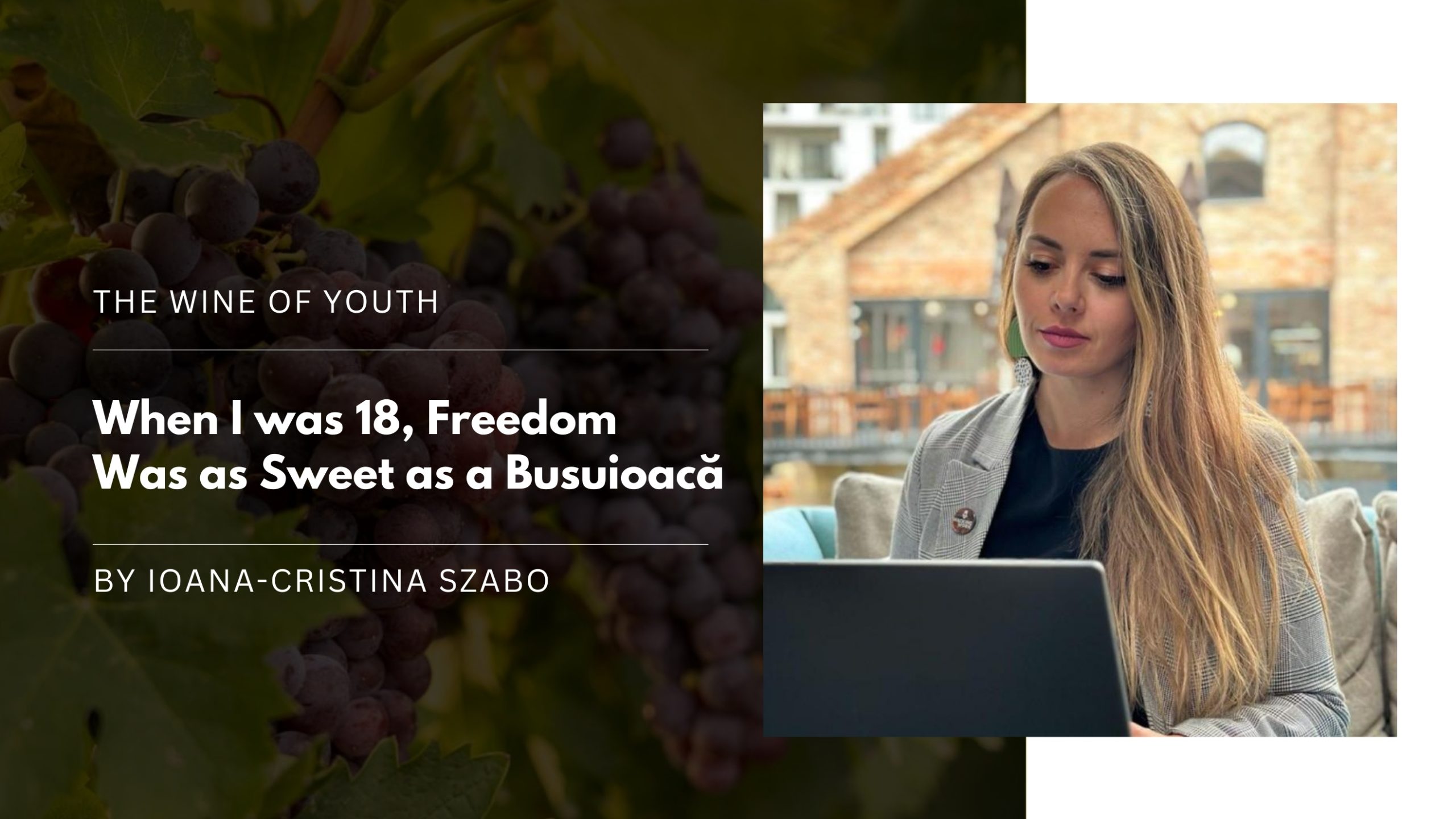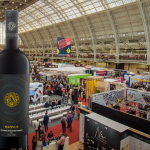Like anyone born in ’89, I only got into wine once I left behind the drinks that tasted like chocolate. That kind of maturity came gradually.
At first, I didn’t really like wine – let’s be honest, there wasn’t much variety – or maybe we just couldn’t afford it. Still, I’ve had my fair share of stomach aches from dozens of bottles of Busuioacă de Bohotin, which I drank because my friends, Nona, Andreea Martinez, Vlad Ichim and Cosmin Mureșan, wanted to. It was sweet, fresh, and easy to drink, but it made me hungry. And I was as good friends with hunger as any teenage girl was back then, when nobody was advocating for normal standards, brain over looks or body positivity.
My mom and her friends would drink Grasă de Cotnari or Tămâioasă, and to me, that seemed like "grown-up wine." We, on the other hand, usually stuck to Busuioacă de Bohotin, with Lacrima lui Ovidiu reserved for holidays or when we pooled money at the club to feel important. Did I ever truly like it? Not really. They were all too sweet for me – but that wasn’t the point. I enjoyed the company. Wine was a social glue.
I don’t really remember the taste of those wines, but I do remember who I shared them with – how we savored them while sitting on a blanket outside, smoking while it was still cool, gazing at the stars before we had smartphones. Talking for hours, rambling, laughing, dreaming of things that, today, I’ve either achieved or long surpassed. Those wines tasted like freedom – and apparently, in the adolescence of my youth (because I’ll be young forever), freedom was as sweet as a Busuioacă.
I only drank Babanul once. It didn’t require a corkscrew, but we’re not going to talk about that phase of my life. 🙂
Angelli sparkling wines were the closest thing we had to the "New Year’s Eve refinement" that we now display much more often. They were also perfect for when we were apparently ambitious enough to cram an entire meal’s worth of calories into a single glass. Today, we have fabulous sparkling wines for every budget. You don’t necessarily need French champagne to feel like something special. Personally, I now prefer sparkling wines from Zarea, Chateau Vartely, and Jidvei. ZAZ from Cotnari is also a very affordable and fresh option that I recently discovered.
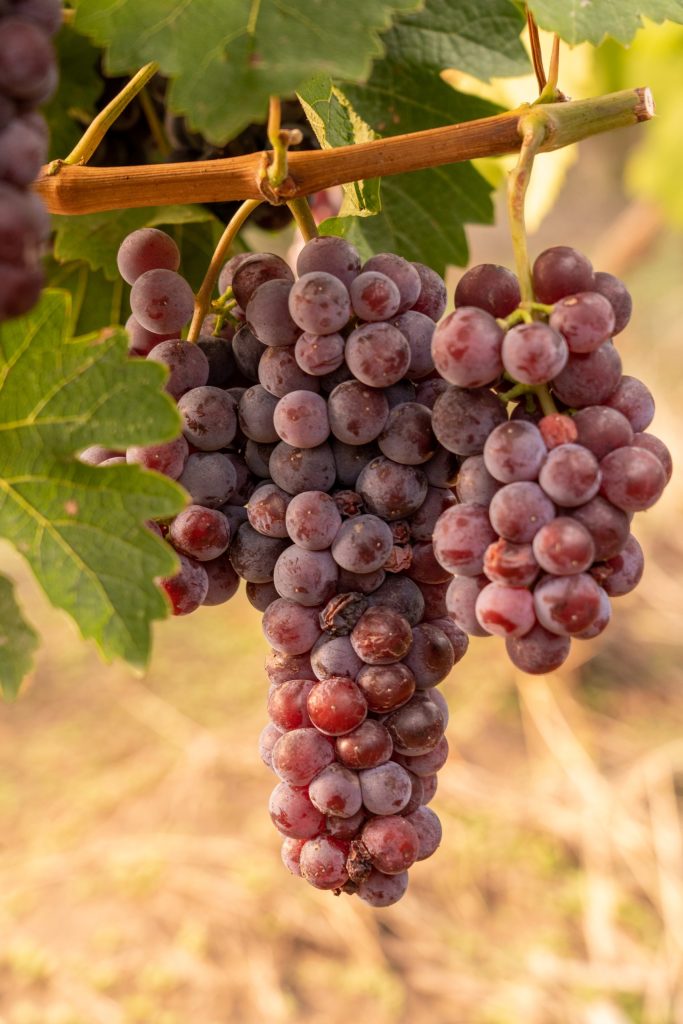
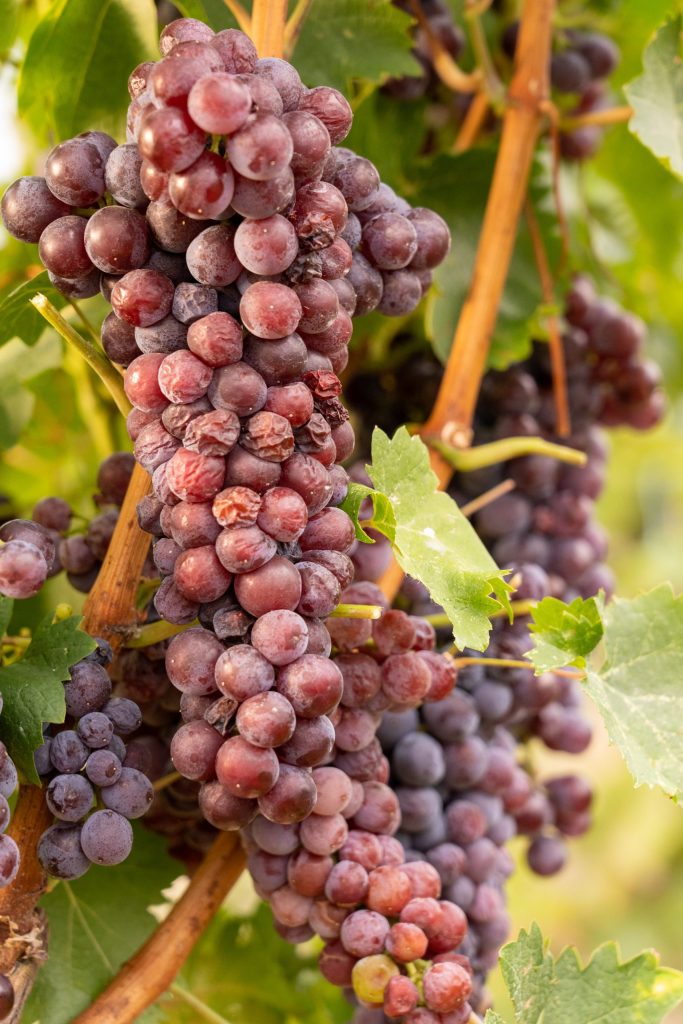
For me, it’s simple – I taste it and decide if I like it. I couldn’t tell you anything about the blend, the vintage, or the fruity or chocolatey notes. But if I like it, I drink it. I do, however, prefer dry and semi-dry wines, just as I probably would have back then if I had access to them. It just wasn’t meant to be – I discovered dry wines later in life, as with so many other things. Today, I’ll always appreciate a Purcari, an Individo, or a wine from the new vineyards of Casa de Vinuri Cotnari. And guess what? I even had a semi-dry rosé Busuioacă de Bohotin – and it was wonderful.
Over time, wine has remained one of my most constant pleasures. Less guilty than liquor, infinitely more refined – even when you present it in a decanter, an ice bucket, or my personal favorite method: straight from the sleeve. Wine is meant to be enjoyed, paired with good food, not just for its Dionysian properties. No one will accuse you of being a drunk, not even if your biggest goal this year is to visit all of Romania’s wineries.
Lately, I’ve even discovered alcohol-free wines, which I find to be by far the best alternative in the alcohol-free beverage sector.
Whatever freedom tastes like for you today – cheers – to who we were, to who we are, to who we will become! May it serve us well, and may we go through life just like a fine wine ages – with grace.
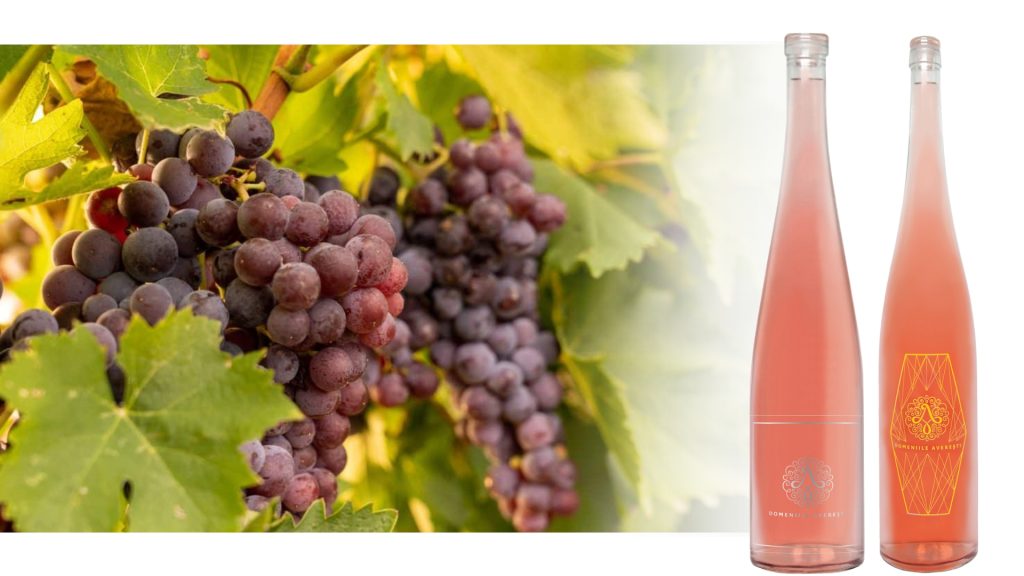
Wines of Romania note:
Countless legends surround Busuioacă de Bohotin, even though the grape variety appears to have emerged relatively recently in Moldova – sometime in the early or mid-19th century when local boyars began hiring French oenologists and “consultants."
One legend tells of a tavern keeper who was the only one producing this sweet, soul-pleasing wine, drawing even the most hurried travelers off their paths just to taste it. Other, more folkloric tales suggest that the wine’s high price included "additional services" from the innkeeper for those who stayed overnight, and its limited availability and steep cost only fueled its growing reputation.
What is certain is that very few people can claim to have tasted a true Busuioacă before 1989, and even afterward, into the early 2000s. Before ’89, the variety had almost disappeared, and it likely wouldn’t have survived at all if not for its strong reputation among artists – actors, novelists, and poets – thanks to the passionate teachers at the Huși Agricultural High School. They valiantly preserved the last remaining rows of this grape variety. In the early years after 1990, it’s hard to say what was actually making it to the market, as the chaotic post-communist capitalism was responsible for many of the era’s misdeeds. Some claimed that what was sold was mostly Pinot Noir with just a hint of Busuioacă – enough to give it a touch of its signature aroma.
Today, thanks mostly to the Averești Estates, Busuioacă de Bohotin has been revived and is now available in every form, from dry to sweet, still or sparkling, and even in a white vinified version. Yet it retains the very aromas that made it famous and define it: white cherries, rosemary, basil, and rose petals – each more or less intense depending on the vintage. In cooler years, it leans toward herbal and vegetal notes, while in warmer years, it is fruitier. But one thing remains constant – it is always delicious!
"The Wine of My Youth" The Wine of Youth is a series of stories about the first wines that introduced us to this fascinating world – at the legal drinking age. Even if we no longer drink those wines today, or some no longer exist, they remain tied to some of the most captivating moments of our lives. After all, those years are, in many ways, the ones that shape us as individuals and define our values.
Even though we may not drink those wines today—or some of them may no longer exist—they are tied to some of the most unforgettable moments of our lives. These are the years that shape us as individuals and define our values.
At Wines of Romania, we want to rediscover these wines—and these values—through your stories, retracing the journeys we’ve taken since then, both as people and as wine enthusiasts.
Send us your stories at info@winesofromania.com
Every week we publish your stories here and celebrate nostalgia with a bottle of wine offered to the most authentic of our followers. Send us your story about how you took your first steps in the world of wine and what variety you fell in love with, and if you convince us, we will send you a bottle of wine as a gift to celebrate this memory as it should be. Who knows, maybe even THAT wine.
At Wines of Romania, we aim to rediscover these wines – and the values they represent – through your stories, retracing the journeys we’ve taken from then to now, both as people and as wine lovers.
We invite you to share your story with us at info@winesofromania.com.
Each week, we publish your stories here and celebrate nostalgia with a bottle of wine gifted to the most authentic contributors. Send us your story about your first steps into the world of wine and the variety you fell in love with – if you convince us, we’ll send you a bottle of wine to properly celebrate this memory. Who knows, it might even be THAT wine.

Ioana-Cristina Szabo is a marketer, storyteller, and mother. A Journalism and E-Media graduate, she has over 15 years of experience working with words across various facets of the communication field.
She has worked in journalism, managed Marketing and PR for different companies, written poetry books, and played a key role in organizing and hosting vibrant events in Cluj as a PR specialist, event coordinator, MC, or sometimes all three at once.
Currently, Ioana is part of the teams at Hacking Work and PozitiVești, where she leads editorial teams and content development while also lending her voice to various media projects.
Passionate about people, words, and the powerful connection between them, Ioana believes her career is more dynamic than most, and she promises never to stop learning, writing, or experimenting.

